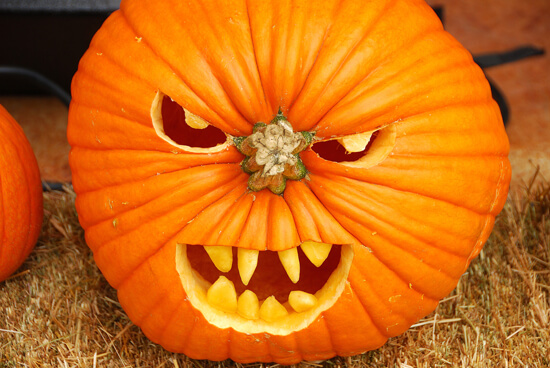The doorbell rings. “I wonder who it is?” “It’the trick-or-treaters honey. It’that time of year!” And so it is, a bunch of little kids in weird looking costumes begging for free candy. Where did this idea of Halloween come from? There must be some reason for all of this spooky hullabaloo and seemingly innocent trickery. As the night echoes with the sound of scary music, scary movies, spook alleys, and costume parties, here you are, about to read about the origin of Halloween. The exact origin of Halloween with all of the present-day traditions is hard to say for sure, but it is clear where part of the main point of Halloween originated and how it made its way into American pop culture.
The English during the middle ages were commanded by the church to honor the saints on November 1st. The day was called “All Hallows Day” or “All Saints Day.” The day was filled with ceremonial church meetings and prayers offered up to the saints. The day before, on October 31st, it was called “All Hallows Eve,” which is where the term Halloween is actually derived from. The reason that the church declared these specific days to give homage to the saints was to combat the Celtic pagan fire festivals that were celebrated around the same time. The church combated all forms of pagan worship by labeling them as “demonic” or turning pagan gods into “satanic” figures that were to be feared by members of the church. These fire festivals that involved dancing, fire, and celebration became labeled as a time when the dead and the devil would come out and drag anyone that participated in this heathen practice down to hell along with all of the pagan worshipers.
Samhain (pronounced Sow-en) was the celebration of the Celtic new year. The Celts celebrated the new year on November 1st. The night before, on October 31st, they believed that all of the spirits of the people that had passed away the year before would come back and look for new bodies to inhabit in order to have any chance at an afterlife. To protect themselves from these spirits, they would do interesting things to prevent the spirits from entering their bodies and possessing them. When the sun began to set, they would put out their fires for the night so that the house would be cold and uninviting to any spirits who might be on the hunt for a comfortable body to inhabit. The townspeople would then dress up in scary outfits and costumes and dance through the streets while being as rowdy as possible to scare away any spirits that might still be in the town. The next day, it is speculated that they would bring their torches to a central fire and take the fire back to their homes so that they could all light their fires from a single source to celebrate the passing of an old year and the birth of a new one.
While these are the origins of Halloween, they are certainly quite different from modern day observance of the holiday. With help from the Catholic Church and the vivid imaginations of American pop culture, Halloween now has its own monsters and traditions that were never a part of the sources of it. Halloween started in America from people who brought their traditions and shared their celebrations with other people that lived here. With all of these new ideas and social rules, it developed into the fluffy costume wearing holiday that it is today.

